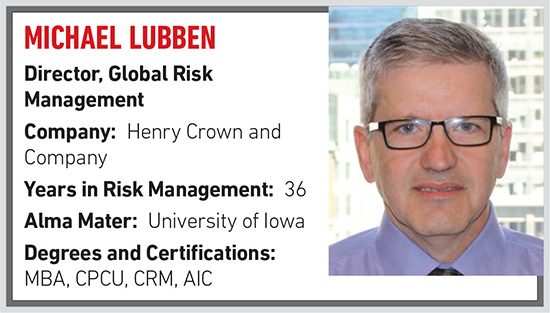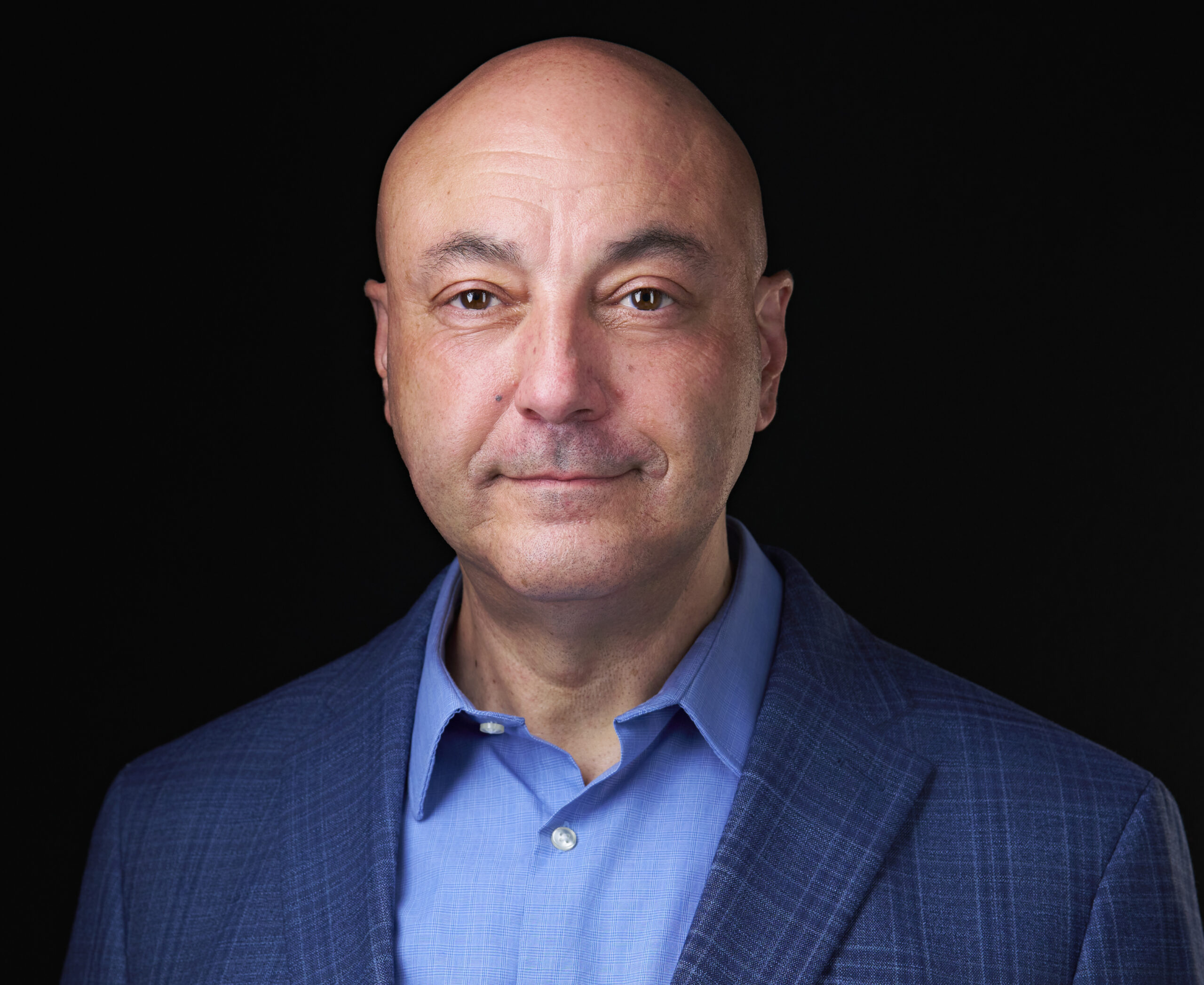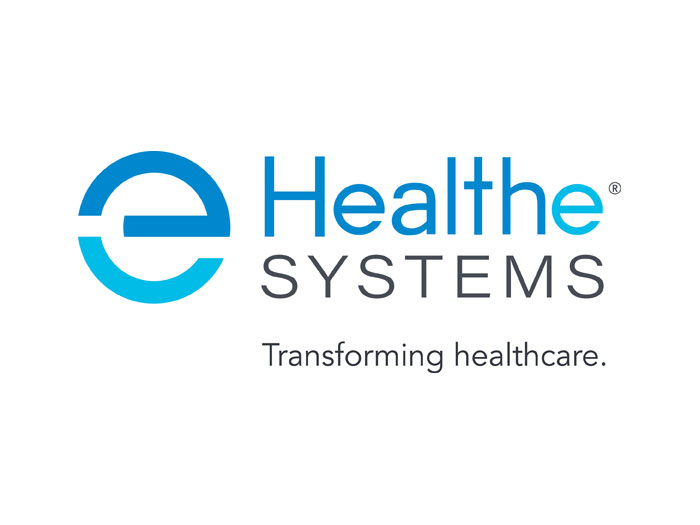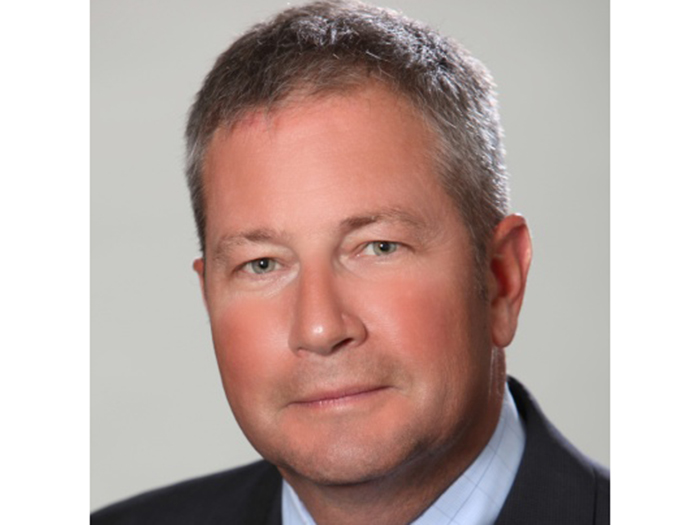Michael Lubben of Henry Crown and Company Shares His Risk Management Journey

R&I: What was your first job?
Property and Casualty Claim Representative for The Aetna Casualty Company.
R&I: How did you come to your current position?
I was with Aetna and held a number of positions within the commercial claims organization. My last position with Aetna was leading a claims organization in Detroit dedicated to managing Chrysler workers’ compensation claims nationally. When we learned my wife was having triplets, we decided to move closer to home.
So, my first true Risk Management position was with KONE – a large elevator and escalator manufacturing company – in Moline, Ill. – just across the river from Iowa. I started there as the Insurance and Claims Manager and eventually became VP of Risk Management.
Ever since then, I’ve been leading Risk Management organizations for large privately held or publicly traded companies. I was the head of risk at Tempur-Sealy prior to Henry Crown.
R&I: What’s been the biggest change in risk management and the insurance industry since you’ve been in it?
Risk management has significantly evolved over the years. When I first got into risk management, it was really about insurance. So, insurance purchasing, and claims management dependent on the retention on the policy.
As our society became more litigious, insurers paid more on claims and markets hardened. Insureds reacted by raising retentions. With increased retentions, there was greater focus on risk management and loss prevention. The risk manager played a larger role in the organization and could develop and execute risk control techniques where it made sense as senior management began to pay attention.
So, you began to see behavioral-based safety, modified-duty, property risk control programs and more. Also, insurance captives started to make sense. These things were all deliverables from risk management that positively impacted employees and the bottom line.
Now risk management is playing an even bigger role in the organization by leading enterprise risk management (ERM) where most or all risks that are identified and controlled through that process are more than likely uninsurable. The profession has become holistic, facilitating the management of the most significant risks in the organization.
One last thing, risk management has become an integral part of crisis management and the dependence on risk management during the COVID-19 crisis won’t go unrecognized within most organizations.
R&I: What’s the biggest challenge you’ve faced in your career?
The most challenging and the most rewarding part of the job is understanding the business and its unique exposures enough to develop practical loss prevention and/or mitigation programs to control the likelihood or severity of losses.
Then to communicate the identified risk and recommended risk programs in a way to get buy-in from the organization. Risk management can develop programs, but if you can’t explain to the operations side of the business why they should assist with and perhaps support them with resources, you’ve failed at your job.
R&I: Who has been your mentor(s) and why?
Bob Stokes. He was an assistant claims manager at Aetna. He taught me that technical skills are important but creating and maintaining trusting relationships was the key to make things happen in the organization. He was a very positive, good man and just fun to be around. I’m not there yet, but it helps me to think about Mr. Stokes at times as I go through my career.
R&I: What is the risk management community doing right?
I like to think we’re doing a lot of things right. Two very important issues come to mind: First, we’re thinking big. Professional periodicals like yours address significant risks that we need to work on, like cybersecurity, supply chain disruption, etc. and risk managers are stepping up to control those risks.
Secondly, we’re engaging with the next generation. We recognize the need for my generation, that is close to retirement, needs to be replaced and there aren’t young people running to the profession. Because of that, professional organizations like Risk and Insurance Management Society focuses on getting young college graduates to understand how the profession can be fun and challenging.
R&I: What could the risk management community be doing a better job of?
While we’re getting better, I still think we’re way too hung up on insurance. Risk managers need to realize that insurance has become a less frequently used tool in our toolbox. Because of that, we need to spend less time on insurance and more time on controlling risks that are either uninsurable or developing and executing programs to avoid the use of insurance in the first place.
R&I: How would you say technology has impacted the risk management profession?
Significantly, we’re using data analytics to better understand how and why our losses are occurring, develop risk management programs and buy insurance.
We’ve chosen to use a combination of highly specialized technology for the different disciplines within risk management due to the structure of our organization. Technology has revolutionized the profession.
R&I: What can manufacturing, hospitality, sports and leisure, and real estate sectors expect in 2021?
COVID-19 has changed how all companies look at risk management. For companies that had good crisis management plans and had risk management departments that could organize and execute an effective response, risk will have a higher profile.
For those companies that reacted sub-optimally, the need to develop good crisis management plans will be on the front burner this year.
Also, due to remote work being so prominent during the pandemic and perhaps for some time in the future, cybersecurity will be a focal point. As more and more employees are using technology like Zoom and Teams to collaborate the bad guys are going to look for ways to take advantage.
R&I: What’s your favorite book or movie?
I enjoy reading about history and like David McCullough’s books. If I had to choose one, probably 1776.
I like crime noir movies from the ’40 and ’50s; to choose one, I’d say, The Stranger with Edward G. Robinson and Orson Wells.
R&I: What is your favorite drink?
Coffee and lots of it.
R&I: What have you accomplished that you are proudest of?
I have now formed three insurance captives. I’m proud of that, as formation takes a great deal of analytical work to determine financial viability and then internal education and communication to sell the benefits of the captive. Also, in all three of those formations, it made a real difference to the organization.
Also, when I was with the elevator company, I started a product liability safety program by standardizing and auditing how our maintenance workers performed service on elevators and escalators. The program resulted in a significant reduction in product liability and general liability cases, but more importantly, made our products much safer for the public.
R&I: What is the riskiest activity you’ve ever engaged in?
Jumping into a lake in Finland after being in a very hot sauna. &










